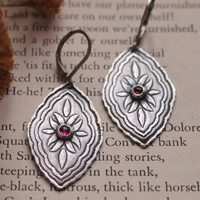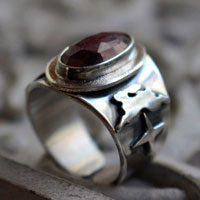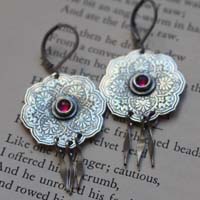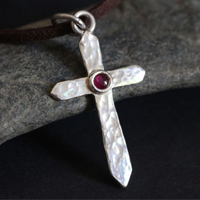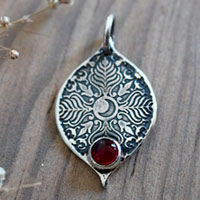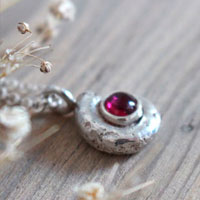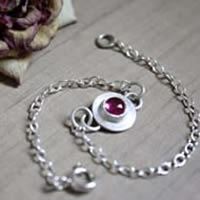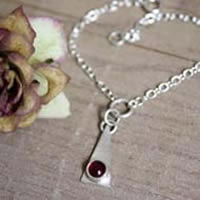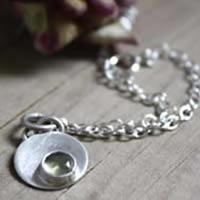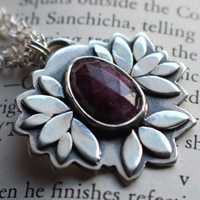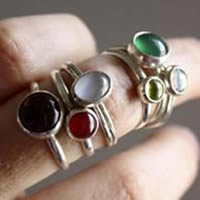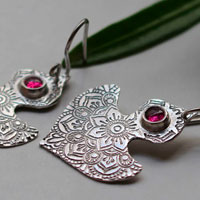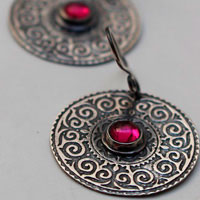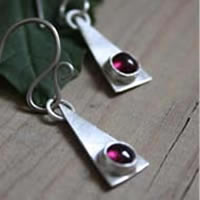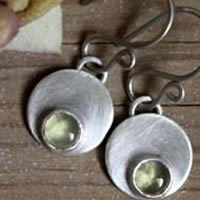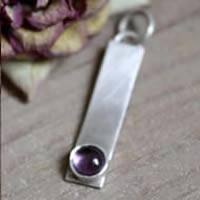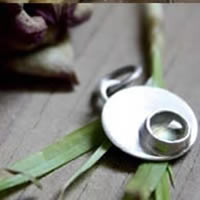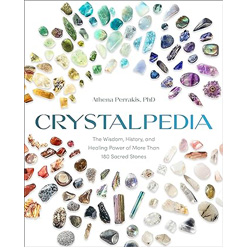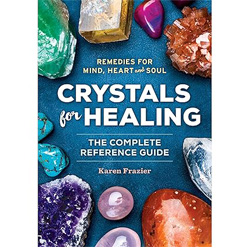- Jewelry
- Inspiration
- Our imagination
- Birthstones
- Celebrating with Eternal Flowers
- Druids and druidesses
- Flower meanings
- History, archeology jewelry
- History and healing properties of metals
- History and healing properties of stone
- Illumination jewelry
- Japanese symbols
- Maya calendar jewelry
- Stone color symbolism
- Stones catalogue
- Wedding anniversaries
- Searches a theme on the site
- Good Deals
- Paintings
- About
- Contact
JEWELRY
- Anklet
- Bracelets
- Brooches
- Cufflinks
- Earrings
- Pendants & Necklaces
- Rings
- Draw your jewelry
- How to clean your jewel
- Metal we used
INSPIRATION
- Our imagination
- Birthstones
- Celebrating with Eternal Flowers
- Druids and druidesses
- Flower meanings
- History, archeology jewelry
- History and healing properties of metals
- History and healing properties stones
- Illumination jewelry
- Japanese symbols
- Maya calendar jewelry
- Stone color symbolism
- Stones Catalogue
- Wedding anniversaries
- Searches a theme on the site
Ruby : history, healing properties and lithotherapy

Ruby properties

The ruby is a precious gemstone belonging to the corundum family, just like sapphires. What sets it apart from other sapphires is its intense red color, caused by the presence of chromium oxide. This vibrant hue gives it an aura of passion and power. In short, the ruby is a red sapphire, although it is classified separately due to its distinct color.
Ruby, like other corundum minerals, is composed of aluminum oxide (Al₂O₃). What makes it unique is the inclusion of chromium atoms, which partially replace aluminum ions in the crystal structure. This substitution is responsible for its brilliant red color. Depending on the concentration of chromium and possible traces of other elements such as iron or titanium, the ruby’s color can range from pinkish-red to deep red.
From a physical perspective, ruby has a hardness of 9 on the Mohs scale, making it the second hardest mineral after diamond. This exceptional hardness makes it highly resistant to scratches and well-suited for jewelry. Its luster ranges from vitreous to adamantine, and it can be transparent to slightly translucent. Ruby is also insoluble in acids, highlighting its excellent chemical stability.
Ruby forms primarily in specific geological settings. It is typically found in aluminum-rich metamorphic rocks, such as dolomitic marbles, where it results from regional or contact metamorphism. It can also occur in igneous rocks like aluminum-rich pegmatites.
The world’s major ruby deposits are located in Myanmar (Burma), Thailand, Sri Lanka, Vietnam, Mozambique, Madagascar, and Afghanistan. Burmese rubies, particularly those from the Mogok Valley, are especially renowned for their "pigeon blood" color—a deep red with a subtle blue undertone that enhances their rare beauty.
Ruby is a dichroic gemstone, meaning it can exhibit two different shades depending on the viewing angle: vivid red and orangish-red. This phenomenon is due to the way the stone absorbs and reflects light.
One of the most fascinating aspects of ruby is its intense fluorescence under ultraviolet light. The presence of chromium in its crystal structure enables it to emit a bright red glow under UV light, which further enhances its color in natural light. This property is particularly pronounced in Burmese rubies, which exhibit an exceptionally strong fluorescence.
The value of a ruby is determined by several criteria:
- Color: The most sought-after hue is an intense red, often referred to as "pigeon blood." Rubies that are too light may be mistaken for pink sapphires, while those with excessive iron content can take on a brownish tint.
- Clarity: Completely inclusion-free rubies are extremely rare. The most common inclusions include crystals of other minerals, fine natural fissures, or rutile silk, which can give the stone a silky sheen.
- Cut and proportions: A well-executed cut enhances the ruby’s brilliance and depth of color. Oval and cushion shapes are the most common.
- Carat weight: Larger rubies are rarer and more valuable. However, an exceptional color and good clarity can compensate for a smaller size.
The name "ruby" comes from the Latin ruber, meaning "red," and has been associated with this precious stone since the 13th century. This designation perfectly reflects the vibrant and captivating color that characterizes the ruby, a gemstone that has fascinated and inspired humanity for centuries.
Before the 19th century, rubies were often grouped under more general names that referred to various red stones. The term "carbuncle," used during the Middle Ages, could refer to rubies, garnets, or spinels. This confusion arose due to limited gemological knowledge and the visual similarity of certain gemstones.
Among the stones that have been mistaken for rubies are:
- Red spinel, sometimes called "Balas ruby."
- Red tourmaline, known as "Siberian ruby."
- Pyrope and almandine garnets, which display deep red hues.
- Fluorite and orangish-pink topaz, although their hardness and luster differ from those of ruby.
With the advancement of gemology and modern analytical techniques (such as spectroscopy, refractive index measurements, and hardness testing), it is now possible to accurately identify a ruby and distinguish it from its imitations.
Ruby remains one of the most prized and sought-after gemstones in the world, admired not only for its beauty but also for its powerful symbolism associated with passion, strength, and protection.
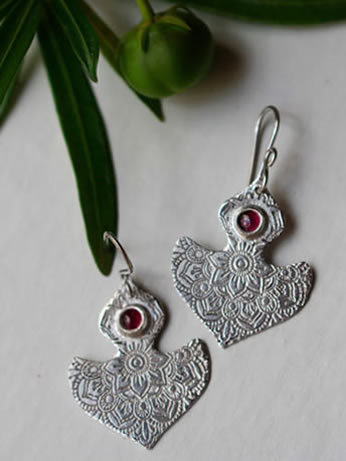
The synthetic ruby
Synthetic stones are gemstones artificially created by humans using sophisticated scientific methods. These processes aim to replicate the natural conditions under which precious stones form, but within a controlled laboratory environment. The goal is to produce stones with the same chemical, optical, and physical characteristics as their natural counterparts.
It is important to note that synthetic stones are not imitations. They are manufactured to closely resemble natural gemstones, but they are created artificially. As a result, it is mandatory to disclose that a stone is synthetic when it is sold.
The first synthetic ruby was created by the French chemist Edmond Frémy in 1877 using the flux growth method. This technique involves melting aluminum oxide salts with traces of chromium in a high-temperature furnace, allowing the formation of artificial ruby crystals.
In 1902, Edmond Frémy’s adoptive son, Auguste Verneuil, perfected this method by developing the flame fusion technique, in which aluminum oxide powder is melted with a red coloring agent. This method, known as the "Verneuil process," made it possible to produce high-quality synthetic rubies on a large scale. Fast and cost-effective, this technique marked the beginning of the industrial production of synthetic rubies.
Today, a variety of sophisticated methods are used to produce high-quality synthetic rubies. Some of the most well-known techniques include:
- The Verneuil method, still widely used for mass production of synthetic rubies.
- The Czochralski method, which involves pulling a single crystal from a molten bath.
- The hydrothermal method, which replicates the natural growth conditions of rubies inside high-pressure and high-temperature autoclaves.
- The Kashan method, based on solution growth using ruby salts.
- The flux growth method, which produces rubies with inclusions similar to those found in natural rubies.
- The Ramaura method, a solution-melt technique that yields synthetic rubies with optical characteristics very close to their natural counterparts.
These different methods provide jewelers and gemologists with a range of high-quality synthetic rubies suitable for various applications. Some synthetic rubies are even cultivated with specific inclusions to further mimic natural stones.
Distinguishing a natural ruby from a synthetic one is often relatively simple with a jeweler’s loupe. Natural rubies typically contain imperfections known as inclusions—internal marks or impurities that form naturally during the gemstone’s creation. These inclusions are a sign of a ruby’s authenticity, as they result from natural geological processes. They can also enhance the beauty and brilliance of a ruby by creating unique reflections and light effects.
In contrast, synthetic rubies, created in controlled laboratory conditions, are often nearly flawless, with no visible inclusions. This high purity results from the manufacturing process, which eliminates imperfections. However, some synthetic rubies exhibit distinctive growth structures, such as curved striations visible under magnification, which help differentiate them from natural rubies.
Mines: Cambodia, the USA, Madagascar, Mozambique, Myanmar, Sri Lanka, Tanzania, Thailand, Vietnam.
History, legends and beliefs about the ruby
Due to the historical confusion between rubies and other red gemstones, it is often difficult to trace the precise history of this fascinating gem. Ancient civilizations, such as the Egyptians, Greeks, and Romans, used general terms to describe red stones, making it hard to distinguish between the ruby and other red gemstones like spinel, garnet, and tourmaline.
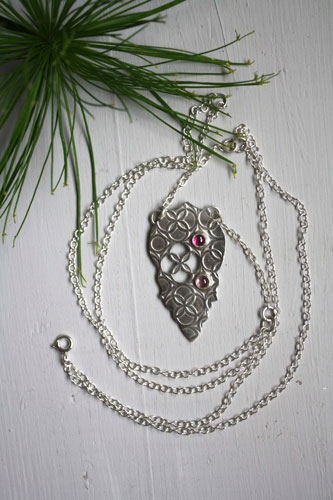
In India, the ruby is particularly valued and recognized for its exceptional qualities. It is often referred to by the Sanskrit name ratnaraj, meaning "king of gemstones," or ratnanayaka, meaning "chief of gemstones." These names reflect the high regard in which the ruby is held in Indian culture, where it is considered a gemstone of great value and power.
Indian rulers and members of the high caste believed that possessing a ruby ensured a high status and lasting influence. It was also said that the ruby allowed its wearer to live in harmony with their enemies, and some kings wore it as a talisman to avoid conflicts and encourage the loyalty of their subjects.
In Hindu rituals, rubies were often offered to deities in temples to gain their favor. A high-quality ruby was even seen as a means of attaining a higher reincarnation in the spiritual hierarchy. The deep red color of the ruby was often interpreted as a reflection of an inextinguishable inner fire, symbolizing passion, vitality, and strength. This fiery hue gave it a sacred meaning, associated with blood and life itself.
In Myanmar, a region historically renowned for its exceptional ruby deposits, particularly those from Mogok, warriors were said to wear rubies that were believed to grant invincibility in battle. According to popular belief, for the ruby to exercise its protective power, it was not enough to simply wear it as jewelry: it had to be embedded under the skin of the warrior. Some accounts even suggest that warriors embedded the ruby directly into their flesh, believing this practice would guarantee them absolute protection from wounds, or even make them invulnerable to enemy blades and arrows. This custom illustrates the reverence given to the ruby in Burmese culture, where it was much more than a mere gemstone but a true talisman of power and survival.
Burmese kings, aware of the rarity and priceless value of rubies, strictly controlled the extraction of the stones, with the finest specimens often reserved for royalty. Rubies were also offered in homage to deities, in the hope of receiving their protection and blessing.
In many cultures around the world, the intense red color of the ruby was associated with blood, symbolizing courage and bravery. Thus, wearing a ruby was seen as a physical manifestation of the inner strength and determination of the warrior, boosting their confidence in battle. This connection between the ruby and blood also explained why it was used as a protective amulet against wounds and illnesses.
Hindus also considered the ruby a stone of protection, prestige, and karma. According to their beliefs, anyone who offered a ruby in tribute to the god Krishna would be rewarded in their next life with a high social position, sometimes even that of an emperor. This belief highlights the spiritual and material value of the ruby, which was seen as a means of achieving a higher status in the cycle of reincarnations. The more intense and pure the red hue of the ruby, the more highly it was esteemed and likely to bring blessings.
In Hindu sacred texts, particularly in the Mani Mala, a collection dealing with gemstones and their symbolism, the ruby is described as an essential element of the divine tree Kalpavriksha. This sacred tree, which grants all wishes, is depicted with fruits made of precious stones, with rubies symbolizing solar power, life energy, and royalty. This image reinforces the association of the ruby with the divine and abundance, emphasizing its role in religious rituals where it was used as an offering to the gods.
The ruby is also linked to several Hindu deities. It is associated with Kartikeya, the god of war and son of Shiva, symbolizing strength and victory, as well as Lakshmi, the goddess of wealth and prosperity, who grants happiness and opulence to her devotees. This dual association underscores the ruby’s dual nature: both a protector and a bringer of success, in battle as well as in business and spiritual life.
Hindus also believed that the ruby emitted intense heat, to the point that it could boil a liquid in which it was submerged. This belief reflects the vibrant energy attributed to the ruby, considered a living stone imbued with an inextinguishable inner fire. It was thus seen as a source of strength, capable of transmitting its energy to its wearer, enhancing their vitality, charisma, and power of action. Some texts also suggest that the ruby could light up the darkness, an allegory of its ability to guide the soul toward light and spiritual knowledge.
Rubies played an essential role in ancient Chinese history, where they were perceived not only as sacred gemstones but also as talismans of protection, prosperity, and longevity. Their brilliant red color evoked fire, vitality, and strength—qualities highly valued in Chinese philosophy.
Chinese warriors often adorned their swords and daggers with rubies, believing these stones would grant them mystical protection from wounds and evil spirits. Some accounts mention that generals and strategists of the Tang Dynasty (618-907) favored rubies for their war talismans, convinced they ensured courage and victory.
Rubies were not only used for personal protection but also for that of imperial and religious buildings. They were often sealed into the foundations of temples, palaces, and imperial tombs, a practice aimed at ensuring prosperity, harmony, and balance according to feng shui. It was believed that the presence of rubies protected the dwelling from negative influences and promoted social and political ascension for its occupants.
A famous legend illustrates the priceless value of rubies in China: it is said that Emperor Kublai Khan, founder of the Yuan Dynasty (1271-1368), offered an entire city in exchange for a ruby of exceptional quality. This anecdote underscores the extreme prestige granted to this gemstone, seen as a symbol of absolute power and divine sovereignty. In Chinese culture, the ruby was often associated with the emperor himself, whose robes were of purple or deep red, embodying celestial authority.
The ruby trade in China flourished as early as 200 BC, particularly through exchanges on the Silk Road, connecting China to the kingdoms of Central Asia, the Middle East, and Europe. Rubies were among the most precious goods, alongside spices, silk, and semi-precious stones. They were especially prized by the Chinese elites and often set in jewelry, imperial seals, or ritual objects.
Some ancient texts also mention a belief that the ruby could illuminate darkness, a metaphor for its ability to bring clarity and wisdom to its wearer. In traditional Chinese medicine, it was sometimes ground into powder and integrated into remedies aimed at stimulating vital energy (Qi) and strengthening health.
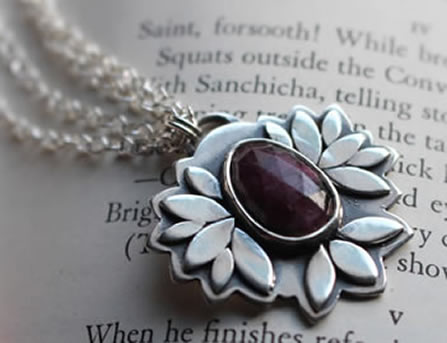
The ruby was introduced to the Mediterranean Europe by the Greeks and Etruscans as early as 500 BC, quickly becoming an essential element of aristocratic adornment and ritual objects. These ancient civilizations, fascinated by the ruby’s fiery brilliance, associated it with fundamental concepts such as fire, vitality, and divine protection.
The ancient Greeks considered the ruby a stone imbued with solar energy, believed to bestow strength, courage, and passion upon its wearer. According to certain beliefs, a ruby of exceptional brightness was seen as a sign of divine favor, while a ruby whose glow weakened could be interpreted as an omen of misfortune.
One of the most widespread beliefs was that seals carved from rubies possessed magical properties. It was said that these seals had the ability to melt the wax used to seal documents, reinforcing the idea that the stone emitted intrinsic heat. Greek kings and aristocrats used these seals not only to authenticate their decrees and contracts but also to protect these documents from alteration or falsification, thereby enhancing their sacred and inviolable nature.
In Greek tradition, the ruby was also linked to deities associated with war and passion, such as Ares (Mars to the Romans), the god of war, and Aphrodite (Venus), the goddess of love and beauty. This dual association made it an ambivalent stone, symbolizing both warrior power and passionate desire.
For the Etruscans, a fascinating people of ancient Italy, the ruby was particularly valued for its deep religious and funerary significance. It was frequently used to adorn amulets and protective talismans, often engraved with motifs representing deities or mythological scenes. Some rubies were also placed in the tombs of the elite to accompany the deceased into the afterlife and ensure their prosperity and spiritual protection.
Etruscan craftsmanship, renowned for its refinement, exploited the vibrant color of the ruby by embedding it into gold adornments, such as rings, brooches, and diadems. This people believed that the ruby intensified vital energy and enabled a privileged connection with celestial forces.
The Romans, like the Greeks, used the term carbunculus to refer to red and brilliant gemstones, including the ruby, as well as spinel and garnet. This word, literally meaning "little glowing coal," evoked the intense brilliance and shine of these gems, which the Ancients often associated with an inner flame.
However, while the ruby was known in Rome, it was extremely rare and expensive, which limited its use. Due to its exceptional hardness and the difficulty of cutting it with the tools of the time, Roman lapidaries generally preferred spinel, which had a similar appearance but was easier to engrave and carve. Thus, unlike the Greeks, the Romans used rubies very sparingly for engraved seals and intaglios, which were finely carved gemstones used as personal stamps or jewelry.
Despite this, the ruby was highly valued in aristocratic and imperial circles, where it was regarded as a symbol of power, prestige, and divine protection. Some ancient texts report that Roman generals wore red stones as talismans, believing that they would ensure victory and protection on the battlefield.
The trade in red gemstones, including rubies, flourished during the Roman period, particularly thanks to trade routes connecting India and Persia. Roman merchants sometimes brought rubies from the East via the Silk Road or through Egyptian ports, where they arrived after a long journey from Southeast Asia’s mines. Some historians suggest that the Romans did not always distinguish between Burmese rubies, spinel, and other red stones, which is why the term carbunculus encompassed several different gems.
In a more symbolic context, the Romans often associated red gemstones with Mars, the god of war, as well as Venus, the goddess of love and beauty. This duality between warrior strength and passionate desire enhanced the ruby’s mystical aura, making it a prized stone among both soldiers and nobles or courtesans.
In medieval Europe, the ruby was regarded as a stone of power and protection, linked to courage, passion, and nobility. Its intense red color evoked both blood and fire, giving it a dual significance: that of sacrifice and courage on the battlefield, but also of romantic passion and vital energy.
Rulers and knights often wore it as a talisman, considering it a mystical bodyguard. Many royal crowns were adorned with rubies, as it was believed that the stone strengthened the king’s authority and warded off plots and betrayal. It was also said that the ruby would darken if its wearer was threatened by imminent danger, such as betrayal or illness. This belief was so widespread that some monarchs took the color of their gemstone very seriously and kept a close watch on it.
The ruby was also a symbol of faith and divine protection. It was often set on reliquaries, crosses, and episcopal rings, as it was believed to guide the soul and protect against evil forces. It also appeared on the weapons of knights and the embroidery of their tunics, in hopes of ensuring their invincibility in battle.
The ruby was also referred to as carboncle, a medieval term that encompassed several red stones, including spinel and garnet. It was said that the carboncle radiated its own glow, illuminating the darkness without the need for any other light source. This belief explains why dragons and some mythical creatures were often depicted with a ruby embedded in their foreheads. The gem was thought to allow them to see in the dark and enhance their intelligence or clairvoyance.
In medieval literature, the ruby is mentioned as a precious stone of heroes and legendary figures. It appears notably in Arthurian tales and chivalric poems, where it is sometimes described as a gem endowed with magical properties. Some texts even claim that placing a ruby under the tongue allowed one to speak all languages and gain universal wisdom.
Finally, in medicine, medieval physicians sometimes prescribed elixirs containing ground ruby, believed to revitalize the blood and strengthen the heart. It was attributed with virtues against melancholy and heart problems, and was sometimes used in alchemical remedies aimed at prolonging life.
In Christian tradition, the ruby has always been viewed as a gemstone imbued with spiritual and mystical values. Its deep red color evoked the blood of Christ, symbolizing His sacrifice and the redemption of sins. It also represented the divine fire, the passion of faith, and the power of God’s love.
The ruby was considered one of the precious stones of paradise, and some medieval theological writings described it as a gem illuminating the heavenly dwellings. It was also associated with angels and martyrs, whose spilled blood was seen as an earthly reflection of the divine light contained within the stone.
In the Catholic Church, the ruby symbolized power and spiritual authority. Cardinals wore a gold ring set with a ruby, which served as a reminder of their commitment to shed their blood for their faith if necessary. This tradition continued until the Second Vatican Council (1962-1965), when it was gradually abandoned in favor of a more modest ring.
The ruby is also mentioned in the Bible, particularly in the Old Testament. It is associated with the breastplate of Aaron, the first high priest of Israel, described in the book of Exodus (Ex 28:17-21). This breastplate, adorned with twelve precious stones, represented the twelve tribes of Israel and served as an intermediary between God and His people. Although the exact identification of the stones varies across translations, the ruby is often listed among them, embodying strength and divine protection.
Medieval theologians also associated the ruby with wisdom and divine justice. It was considered a stone that conferred discernment and clarity of judgment upon those who wore it. This symbolism extended to Christian monarchs, who saw the ruby as a manifestation of their divine right to rule.
Finally, the ruby was sometimes used in the creation of reliquaries, jeweled crosses, and sacerdotal ornaments. It appeared in some illuminated manuscripts, where it was depicted to emphasize the sacred nature of certain words.
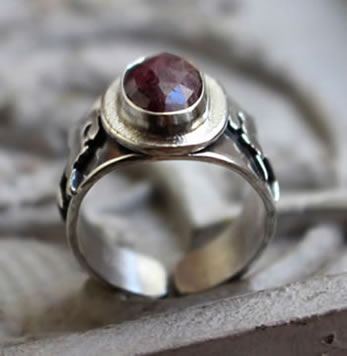
The ruby holds a special place in Islamic tradition, where it is often perceived as a gemstone of divine origin. According to some mystical interpretations, it played a role in the creation of the world.
According to a hadith reported in Islamic exegesis, before the creation of the Earth, the Divine Throne rested upon a sea of light, and certain symbolic narratives mention that this light resembled the radiance of the ruby. This association reinforces the idea of the ruby as a stone of light, purity, and spiritual connection.
Another tradition recounts that God sent a house of ruby to Adam for him to live in with Eve, symbolizing divine protection and the abundance granted to humanity. This house would later be replaced by the Kaaba, which, according to some Islamic legends, was initially formed from precious stones before being reconstructed in its current form.
The ruby is also mentioned in several hadiths as a precious stone associated with baraka (blessing). It is attributed with protective virtues, notably against diseases, evil spirits, and harmful influences. In some traditions, it is said that the Prophet Muhammad described paradise as a place where palaces are made of pearls, sapphires, and rubies, thus reinforcing the image of the ruby as a celestial symbol and a stone of prestige.
Finally, some Muslim scholars, influenced by medieval tradition, considered the ruby as a stone of energy and vitality, linked to courage, protection, and prosperity. In traditional Islamic medicine, known as Tibb, the ruby was sometimes used in powdered form for its purifying and revitalizing properties.
Eastern rulers placed immense value on the ruby, seeing it as a symbol of power, prestige, and divine protection. This precious stone adorned the crowns, thrones, weapons, and ritual objects of monarchs and dignitaries from various civilizations.
In the Persian Empire, the ruby was considered an imperial talisman. It was believed to preserve the health of the ruler and ensure the prosperity of the kingdom. Ancient Persian texts describe rubies embedded in the diadems of Sassanid kings, believed to grant them courage and clairvoyance.
Marco Polo, the famous Venetian explorer of the 13th century, reported in his writings the magnificence of Ceylon (now Sri Lanka) and Siam (now Thailand) rubies, known for their exceptional brilliance. He recounts the story of the king of Ceylon, who possessed a ruby so large and pure that no foreign ruler could acquire it, even in exchange for an invaluable treasure.
Another striking example of the importance of rubies in ancient East is that of the Caliph of Baghdad, Al-Mustanṣir bi-llāh, who, in the 13th century, supposedly paid a colossal tribute to the victorious Turks. This treasure included a golden peacock adorned with precious stones, including rubies for its eyes, a rooster with ruby eyes, and even an egg entirely carved from a ruby.
The ruby, as a gemstone associated with 35 years of marriage, embodies the strength of the marital bond, enduring passion, and the depth of feelings. Its intense red color, evoking fire and blood, is often interpreted as a reflection of passionate love that endures through the years. By gifting a ruby for this anniversary, one celebrates the solidity of the union, fidelity, and mutual commitment, highlighting the rarity and preciousness of the bond between spouses.
The ruby is also the birthstone for the month of July, making it a symbolic gift for those born during this summer month. Traditionally, birthstones are attributed with protective and lucky virtues, and the ruby is no exception. It is believed to bring energy, courage, and prosperity to its wearer. Its association with the sun and warmth also makes it a stone of vitality, enhancing inner strength and motivation.
In some cultures, the ruby is also linked to those born under the sign of Leo, which dominates much of July. It reflects their ardent character, ambition, and royal nature.
The most famous rubies
The largest ruby ever discovered weighs 3,421 carats and was found in 1961. This exceptional discovery immediately caught the attention of gemmological experts, fascinated by its impressive size and intense color.
Upon its extraction, the rough stone generated great interest in the gemstone market. Typically, rubies of such size are extremely rare and difficult to find in an exploitable state, as they often contain internal cracks or inclusions. However, this one was of sufficient quality to be cut.
The stone was analyzed by several experts before being entrusted to a cutting workshop. The cutting process was meticulously studied to maximize the preservation of the ruby’s weight and color. After cutting, the largest piece obtained weighed 750 carats, making it one of the largest cut rubies ever recorded.
Interestingly, this ruby has never received an official name, which is unusual for a stone of such magnitude. This could be due to its unclear history after its discovery or the fact that it remained in the hands of private collectors without ever being integrated into a major royal or museum collection.
Madame de Montespan’s ring, dating from the early 18th century, is a remarkable example of the use of rubies in high jewelry of the time. This precious piece was adorned with a carved ruby depicting the profile of Madame de Montespan herself, a particularly refined and rare engraving technique for gemstones of such hardness.
Madame de Montespan, the famous mistress of Louis XIV, held considerable influence at the French court. Known for her taste for luxury and her love of sumptuous jewelry, she owned an impressive collection of gemstones. This finely chiseled ruby ring was both a symbol of her power and a tribute to her beauty.
Engraving techniques on rubies were extremely complex at the time, as corundum (the mineral family of rubies) is one of the hardest stones after diamond. Creating such a fine cameo required exceptional craftsmanship, making it a masterpiece of 18th-century jewelry.
Some sources suggest that this ring was commissioned to immortalize the royal favorite in a form that would endure through time, much like the ancient medals representing Roman emperors. This type of jewelry was not only a prestige object but also a political tool asserting her influence at the court of the Sun King.
It is difficult to know where this ring is today, as many jewels from that period were dismantled, melted, or lost over the centuries. However, if it still exists, it would be an exceptional piece for collectors and historians of jewelry.
The Crown of Saint Wenceslas, one of the most precious jewels of the Crown of Bohemia, was commissioned in 1346 by Charles IV, King of Bohemia and future Emperor of the Holy Roman Empire. He had it made for his coronation in 1347, not only as a symbol of his power but also in honor of Saint Wenceslas, the patron saint of the Kingdom of Bohemia.
Made of pure gold, this crown is adorned with exceptional gemstones: 19 sapphires, 30 emeralds, 20 pearls, 44 spinels, and at its center, an imposing uncut ruby of approximately 250 carats, which is its centerpiece.
The central ruby of the crown is one of the largest uncut rubies known in the world. Its size and purity make it an extremely rare piece for the time, when gemstones were often cut into cabochons or faceted.
In medieval symbolism, the ruby was considered a stone associated with divine power, protection, and royal strength. Its intense red color was linked to the blood of Christ, reinforcing its spiritual and sacred role in the crown.
By placing this stone at the center, Charles IV affirmed his connection to the lineage of Bohemian rulers and the protection of the patron saint Wenceslas. The crown was only to be worn on rare occasions, mainly during the coronation of the Kings of Bohemia.
Today, the Crown of Saint Wenceslas is kept in St. Vitus Cathedral within Prague Castle. Its access is extremely restricted: it is protected by seven keys, held by seven high-ranking Czech dignitaries, including the president of the Republic and the Archbishop of Prague.
It is only rarely displayed to the public, typically for significant anniversaries related to the history of Bohemia or the Czech Republic. Each appearance of the crown is a major event, drawing thousands of visitors who come to admire this priceless jewel.
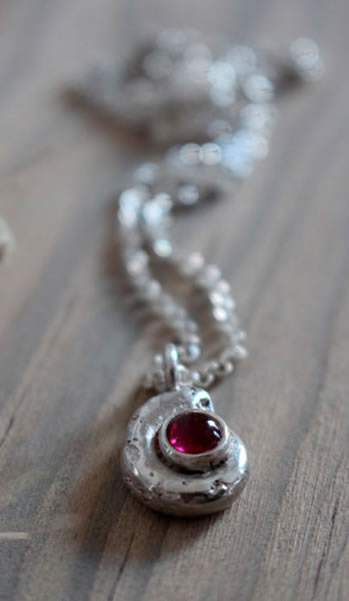
The Carmen Lucia Ruby is an exceptional 23.10-carat Burmese ruby, famous for its intense red color, described as "pigeon blood red," which is the most sought-after hue for a ruby. This stone is considered one of the most beautiful faceted rubies ever displayed to the public.
Originating from the Mogok mines in Myanmar (Burma), a region renowned for producing the finest rubies in the world, this gem stands out for its purity and transparency, which is extremely rare for a ruby of this size. Typically, large rubies are highly included, but the Carmen Lucia Ruby possesses exceptional clarity, further increasing its value.
The ruby is named after Carmen Lucia Buck, the wife of Dr. Peter Buck, an American physicist and philanthropist. When Carmen Lucia fell seriously ill, her husband wanted to give her an extraordinary piece of jewelry. In 2000, he acquired the ruby set in a platinum ring surrounded by diamonds, but tragically, she passed away before she could wear it.
Deeply affected, Peter Buck decided to donate the ruby to the Smithsonian Institution in memory of his wife. He wanted this exceptional stone to be admired by the public and to serve as a testament to the love he had for her.
Today, the Carmen Lucia Ruby is displayed at the National Museum of Natural History in Washington D.C., alongside the famous Hope Diamond and other historical gemstones. It is regarded as one of the most beautiful faceted rubies in the world and remains one of the largest gem-quality Burmese rubies ever exhibited to the public.
The Peace Ruby was discovered in 1919 in the rich deposits of Mogok, Myanmar, a region globally famous for producing the finest rubies. Its name is directly linked to a significant event in world history: the signing of the Treaty of Versailles, which officially ended World War I that same year.
This exceptional Burmese ruby is remarkable for its round shape and 43-carat weight, a rare size for a gem of such quality. Its brilliance and intense pigeon blood red color, a hue highly sought after in gemology, make it a truly exceptional ruby.
The name of this ruby was no accident. In 1919, after four years of devastating war, the world longed for lasting peace. The Peace Ruby quickly became a symbol of hope, renewal, and prosperity, embodying the desire to turn the page after a deadly conflict.
Its association with such an iconic treaty enhances the historical and symbolic value of this gem, highlighting the role that gemstones can play in human history, far beyond their mere beauty.
After its discovery, the Peace Ruby was acquired by private collectors and prestigious jewelers. However, little information is available about its setting as jewelry or its current owner. Like many legendary gemstones, its history remains shrouded in mystery, which only adds to its allure and appeal.
Today, this stone is recognized as one of the finest Burmese rubies of the 20th century, both for its exceptional quality and for the symbolic significance of its name.
The Edwardes Ruby, weighing 167 carats, is one of the largest and most remarkable rubies in the world. It is named after Sir Herbert Benjamin Edwardes, a 19th-century British officer and administrator known for his role in the British Empire in India. This ruby is distinguished by its vibrant red color and exceptional translucency, a rare characteristic for a stone of this size.
The Edwardes Ruby originates from the Mogok mines in Myanmar (formerly Burma), a region renowned for producing the finest and most coveted rubies in the world. Gems from this locality are famous for their pigeon blood red hue, a deep and saturated shade resulting from a high concentration of chromium, the element responsible for the ruby’s intense color.
At 167 carats, this stone is among the largest faceted rubies ever discovered, although, unlike gems intended for jewelry, it has been preserved as a collector’s specimen rather than set in a piece of jewelry.
The Edwardes Ruby is now housed and displayed at the Natural History Museum in London, where it is admired by mineralogy and gemology enthusiasts from around the world. Its significance lies not only in its size but also in its purity and brilliance, perfectly illustrating the exceptional quality of Burmese rubies.
The Gnaga Boh Ruby, also known as the "Lord Dragon," is a 44-carat raw ruby that was cut to a final weight of 20 carats. This precious stone, with its deep red hues, belongs to the prestigious tradition of Burmese rubies, renowned for their brilliant color and exceptional rarity.
This ruby was presented to King Tharrawaddy Min (reigning from 1837 to 1846), the ruler of the Konbaung dynasty in Myanmar. Known for his keen taste for precious stones and luxury items, King Tharrawaddy viewed gems as symbols of power and divine protection.
In Myanmar, the ruby has always been perceived as a royal stone, associated with strength, invincibility, and favor from the gods. The name "Gnaga Boh," meaning "Lord Dragon," reflects this belief. In Burmese culture, the dragon is a spiritual guardian representing strength and protection.
The cutting of this stone revealed its brilliance, though it also reduced its weight by half, a significant loss for such a rare ruby. Nevertheless, it remains one of the most famous rubies connected to Burmese royalty, a symbol of the grandeur and refinement of King Tharrawaddy’s court.
The Graff Ruby, weighing 8.62 carats, is a ruby of remarkable purity, characterized by its pigeon blood red color, the most sought-after hue for this gemstone. Its intense brilliance and exceptional transparency make it one of the most beautiful rubies ever discovered.
This stone was cut and set by Graff Diamonds, a renowned British jewelry house founded by Laurence Graff, famous for its work with diamonds and rare gemstones. The ruby is mounted on a platinum ring, surrounded by trapeze-cut diamonds, highlighting its color and inner fire.
When it was auctioned by Sotheby’s Geneva in November 2014, the Graff Ruby achieved 8.6 million Swiss francs (approximately 6.8 million euros at the time), setting a world record for the price per carat for a ruby. Its price is explained by several factors: its rare and highly coveted pigeon blood red color, its purity and transparency—rare for a ruby of this size, its Burmese origin, as Myanmar is the source of the finest rubies in the world, and its association with the Graff house, known for working with the most prestigious gemstones.
Today, the Graff Ruby is considered one of the most perfect rubies ever sold, a masterpiece of high jewelry and a symbol of ultimate luxury.
The Hixon Ruby, with an impressive weight of 196 carats, is a raw ruby of exceptional purity, extracted from Myanmar, a region renowned for producing the finest rubies in the world. This stone is distinguished by its intense red color, often compared to the legendary pigeon blood red, as well as its natural brilliance, remarkable for an uncut ruby.
Unlike other famous rubies often set in jewelry, the Hixon Ruby is preserved in its raw form, allowing gemologists and mineralogy enthusiasts to admire its natural formation and well-developed crystals. It is part of the most precious pieces in the collection of the Natural History Museum of Los Angeles County, USA. This museum, known for its exceptional collection of minerals and gemstones, displays the Hixon Ruby as a perfect example of natural crystallization of corundum, alongside other rare gems.
The Hixon Ruby is often regarded as one of the most beautiful raw rubies ever discovered, not only because of its impressive size but also due to its unusual clarity for an uncut stone. It serves as a reference in the study of corundum and remains an iconic example of the raw, natural beauty of rubies.
The Maung Lin Ruby, originating from Myanmar, is one of the most impressive raw rubies ever discovered, with an initial weight of 400 carats. This stone of exceptional quality is a testament to the richness of the Burmese deposits, particularly those from the Mogok Valley, recognized as the source of the finest rubies in the world.
Due to its colossal size, the Maung Lin Ruby was cut into three distinct parts, a decision often made to maximize the commercial value of the gemstones. One part was left uncut, maintaining its natural shape, which is rare for a ruby of this size and quality. The other two pieces were cut, resulting in rubies of 70 carats and 45 carats, which were used in high-end jewelry.
The Maung Lin Ruby is a perfect example of the excellence of Burmese gemstones, often characterized by their intense red color, purity, and exceptional luminosity. Its history also illustrates the practices of cutting and optimizing gemstones, allowing multiple precious stones to be obtained from the same raw crystal.
Its renown and impressive initial size make it a major reference in the study of rubies and an iconic example of Myanmar’s mineral wealth.
The Nixon Ruby, weighing an impressive 196.1 carats, is a gemstone from Myanmar, one of the most renowned sources for exceptional rubies. Its natural brilliance and translucency make it a remarkable gem, often compared to other famous rubies for its quality and color intensity.
This ruby stands out for its deep red hue, typical of rubies from the Mogok Valley, a deposit famous for producing the most sought-after stones in the world. The richness of chromium in these deposits gives the rubies a unique luminosity and saturation, making them particularly prized in the world of jewelry and collecting.
Unlike many rubies cut for use in jewelry, the Nixon Ruby has been preserved in its raw form, making it a specimen highly valued by gemologists and collectors. Its impressive size and natural shape allow for the admiration of the internal characteristics of the crystal and its inclusions, which testify to its authenticity and geological origin.
Like other iconic rubies from Burmese deposits, the Nixon Ruby is a perfect example of the mineral richness of the region, confirming Myanmar as one of the cradles of the most coveted rubies in the world. Its preservation in gemological collections allows for detailed study of the specificities of large natural rubies and provides insight into the formation processes of precious stones.
The Sunrise Ruby, weighing 25.59 carats (not 25.60), is a gemstone of extraordinary purity and color intensity. Classified in the highly sought-after "pigeon blood" red category, it is known for its perfect saturation and brilliant luster—essential criteria for distinguishing exceptional rubies.
The ruby takes its name from the famous 13th-century poem "The Rising Sun," which evokes the radiant beauty and power of morning light. This association enhances the symbolism of the ruby, often seen as a stone embodying vitality, strength, and passion.
On May 12, 2015, the Sunrise Ruby was auctioned at Sotheby’s in Geneva, fetching a record-breaking price of $30.3 million, more than one million dollars per carat, making it the most expensive ruby ever sold. Its exceptional price can be attributed to its Burmese origin, rare color, absence of heat treatment, and its setting by Cartier.
This ruby is set in a platinum ring adorned with diamonds, a masterpiece crafted by Cartier, one of the most prestigious high jewelry houses in the world. The design highlights the deep brilliance of the ruby, surrounding it with an elegant setting that enhances the stone’s radiance.
The Sunrise Ruby comes from the mines of Myanmar, renowned for producing the finest rubies in the world. These stones owe their intense red color to a high chromium content, which gives them their sought-after hue and fluorescence under UV light. The quality of this ruby, combined with its history and prestige, explains its unique status in the world of gemology and high jewelry.
The Seal-Portrait of Alexander the Great, a 15-carat ruby engraved with the face of the legendary figure of conquest and absolute power, is a piece of significant historical and symbolic importance. This intaglio, a gemstone carved in relief, is believed to have belonged to Emperor Augustus, who used it to seal his official documents. Augustus, the first emperor of Rome (reigned from 27 BC to 14 AD), was fascinated by Alexander, whom he considered a model of universal sovereignty. It is said that this ruby was passed down through generations, becoming an emblem of imperial power and changing hands among several Roman emperors, until it reached Vespasian (reigned from 69 to 79 AD).
After the fall of the Roman Empire, the seal is said to have reappeared at the court of the French kings, reinforcing the idea of continuity between the grandeur of Rome and the French monarchy. It is likely that this ruby was reset into royal insignia or incorporated into a precious jewel.
Unfortunately, no trace of this ruby has been found after centuries of history. It may have been stolen, lost, or destroyed during the wars and pillaging that marked Europe’s history. Some historians speculate that it could still be in a private collection or hidden treasure.
Healing properties and benefits of the ruby
Throughout the long history of humanity, people have attributed various properties, virtues and healing beliefs to ruby. The information presented here is shared from a cultural and historical perspective, in order to illustrate the symbolic relationship that has developed between this stone and different civilizations over the centuries. Like the preceding elements, it is part of our scientific and historical approach. It does not constitute any form of therapeutic or medical recommendation, nor does it reflect our personal beliefs.
The ruby, a red variety of corundum, shares some properties with the sapphire, but it is distinguished by its fiery energy and symbolism deeply connected to fire, vitality, and passion. Since ancient times, it has been revered for its supposed virtues, both physical and spiritual.
- The ruby is traditionally associated with blood and the heart. It is considered a regulator of the cardiovascular system, promoting better blood circulation and helping to combat fatigue and anemia. It was said to be used to strengthen the heart and prevent strokes.
- The ruby is often associated with stimulating the kidneys, adrenal glands, and liver. It may help reduce cholesterol levels and improve the body’s detoxification process. Some also attribute benefits to the pancreas, relating to the regulation of blood sugar levels.
- In many traditions, the ruby was worn by women wishing to conceive, as it was believed to be linked to fertility and sexual vitality. It is also associated with regulating menstrual cycles and could alleviate pain related to menstruation.
- It is believed to have virtues against fever, infections, and inflammatory diseases. Some used it to relieve respiratory problems, including asthma and bronchitis.
- According to certain beliefs, the ruby could alleviate digestive disorders, such as chronic diarrhea and intestinal pain. It was sometimes used to stimulate metabolism and promote better nutrient absorption.
- Due to its stimulating energy, the ruby is sometimes associated with relieving pain related to arthritis and rheumatism. It may also aid in recovery after intense physical effort.
- Thanks to its symbolic connection with blood, the ruby is also associated with tissue regeneration and faster wound healing.
- A stone of dynamism and endurance, the ruby is often recommended for individuals who are tired or lacking in energy. However, it is not advised for those with high blood pressure or prone to stress, as it could amplify excess energy and worsen anxiety.
- Historically, the ruby has been considered an aphrodisiac, fostering passion and sensuality. It symbolizes a fiery and lasting love. It was sometimes placed under the pillows of newlyweds to stimulate fertility and strengthen their bond.
- In both Asian and European traditions, the ruby was worn by warriors before battle, as it was thought to bring bravery and protection. It would stimulate mental strength, willpower, and perseverance.
- In some ancient beliefs, the ruby was said to ward off evil and repel bad luck. It was worn as a talisman against poisons and negative influences.
 Please note that all healing properties attributed to stones come from ancient traditions and various cultural sources. This information is provided for informational purposes only and does not constitute medical advice. In case of any health concerns, it is recommended to consult a qualified professional.
Please note that all healing properties attributed to stones come from ancient traditions and various cultural sources. This information is provided for informational purposes only and does not constitute medical advice. In case of any health concerns, it is recommended to consult a qualified professional.
Ruby jewelry samples
To learn more about litotherapy, we recommend you the following books:

